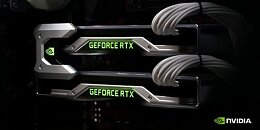NVIDIA has been limiting SLI support recently with only the RTX 3090 featuring support for the feature and even then only through modern APIs such as DirectX 12 and Vulkan meaning that games must explicitly support SLI to work. NVIDIA will no longer be adding new SLI driver profiles on RTX 20 Series and earlier GPUs starting on January 1st, 2021. The only way to use SLI going forward will be through native game integrations which NVIDIA will focus on helping developers provide. NVIDIA also noted that various DirectX 12 and Vulkan games already feature native integrations such as; Shadow of the Tomb Raider, Civilization VI, Sniper Elite 4, Gears of War 4, and Red Dead Redemption 2. Creative and other non-gaming applications that support multi-GPU acceleration will continue to function across all supported GPUs.

View at TechPowerUp Main Site

View at TechPowerUp Main Site








